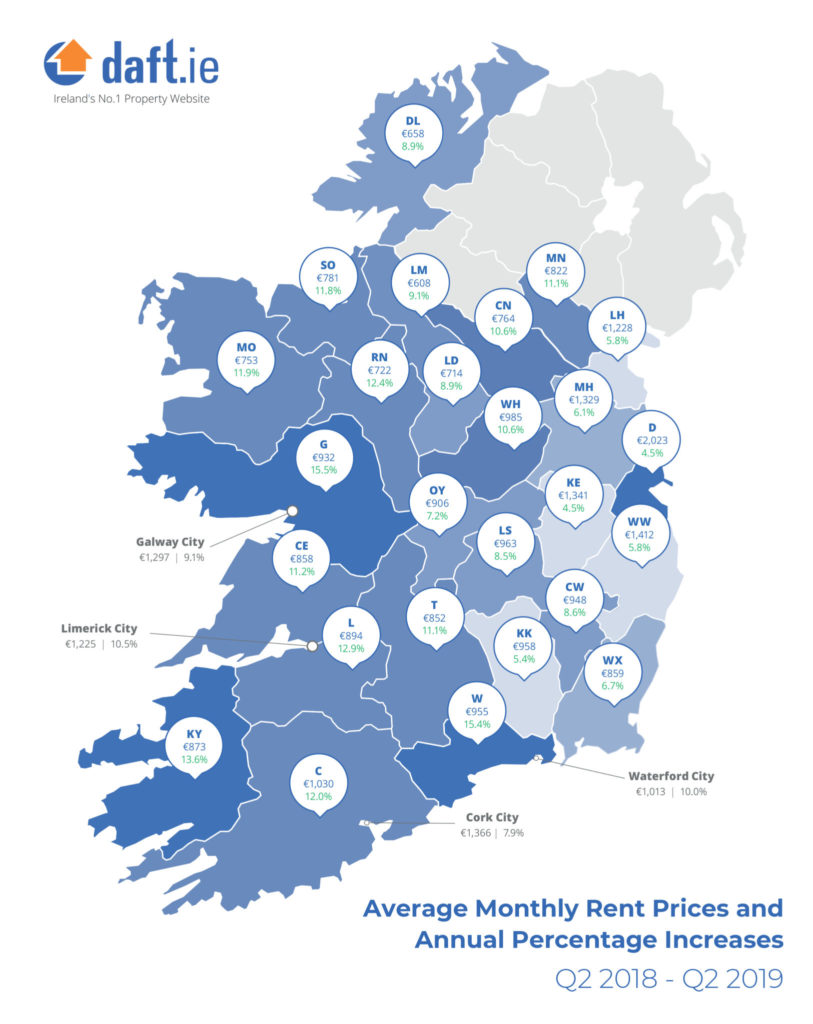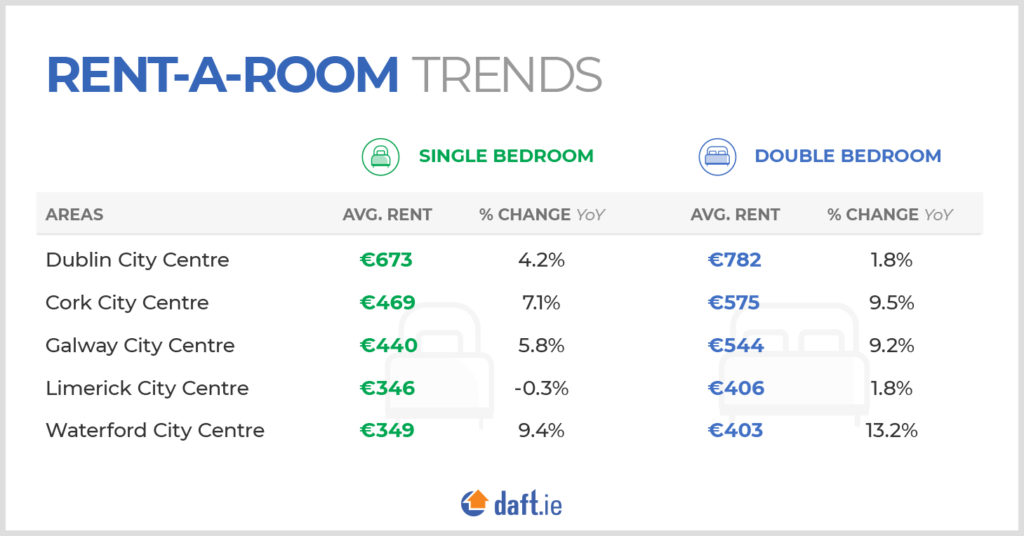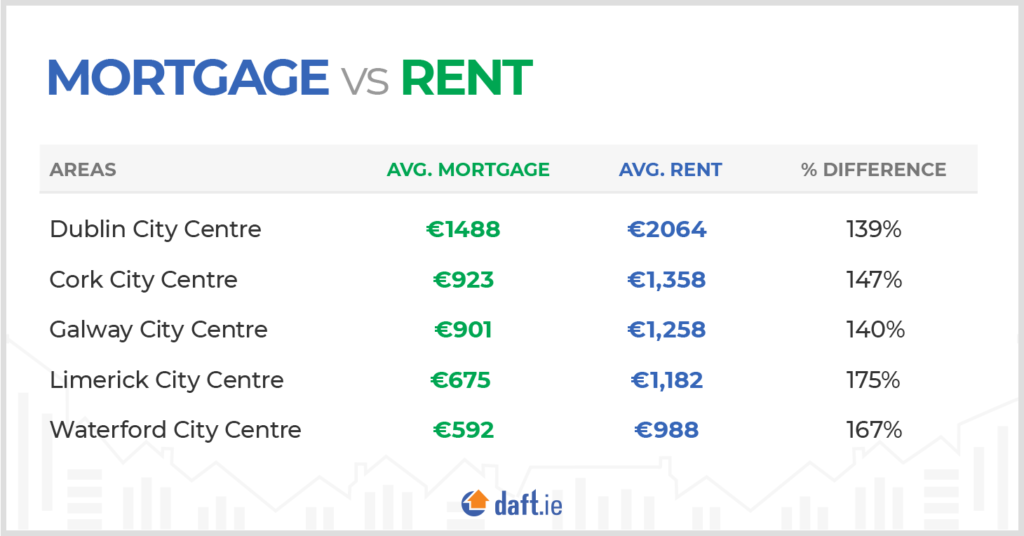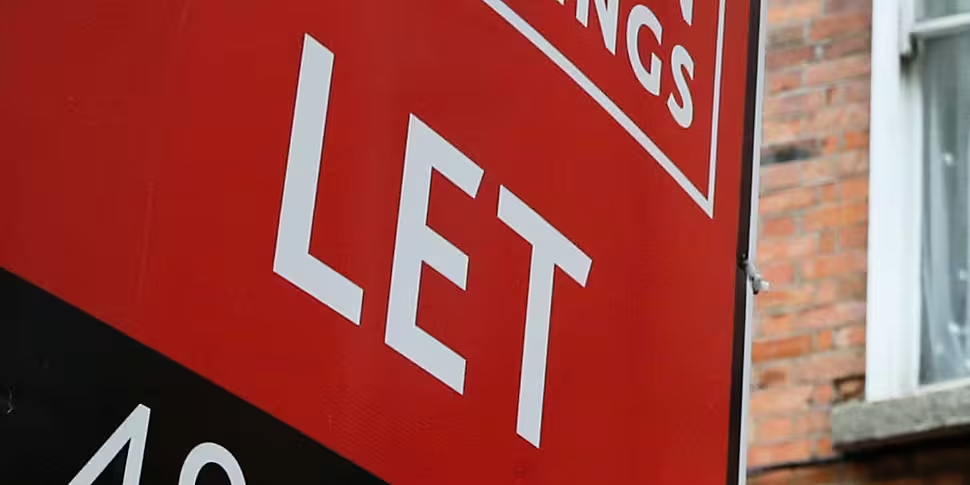New data suggests rents rose by an average of 6.7% nationwide in the year to June.
That is according to the latest quarterly rental report by Daft.ie.
It found that rents in the capital are now 40% higher on average than their previous peak at the end of 2007.
In Dublin, rents were on average 4.5% higher in the second quarter of 2019 than a year previously.
The average listed rent is now €2,023 - up 101% from its lowest point in 2011.
Nationwide the average monthly rent stands at €1,391 - the lowest rate of rental inflation since the final quarter of 2013.
The average listed rent is now €361 per month higher than the previous peak in 2008, and almost €650 higher than the low seen in late 2011.
 Source: Daft.ie
Source: Daft.ieThe slowdown in rental inflation is driven by Dublin, where annual inflation has fallen from a high of 13.4% in mid-2018 to 4.5% now.
There has also been a cooling off in inflation in the other major cities - although the level of inflation is still higher than in Dublin.
In Cork, rents are 7.9% higher than a year ago, while in Galway city rents are 9.1% higher.
In Limerick, rents have increased by 10.5% in a year, similar to the increase seen in Waterford city (10%).
Outside the major cities, rental inflation varies from 6.2% in Leinster to close to 12% in both Munster and Connacht-Ulster.
 Source: Daft.ie
Source: Daft.ieCommenting on the report, economist Ronan Lyons says: "The slowdown in rental inflation will be welcome news to tenants and policymakers, among others.
"It is more likely driven by limits to affordability than improved supply, however.
"Availability on the rental market remains at levels that were unprecedented prior to 2015.
"For example, in the Dublin market, there were just 1,541 properties available to rent on August 1st.
"While that's up from 1,121 two years ago, it's well below the average of 4,700 for the preceding decade.
"Building new rental supply remains critical to fixing the rental market.
"New figures in this report suggest that up to 25,000 new rental homes will be built over the coming few years."
The data also suggests that rental payments are surpassing mortgage payments in most major urban centres.
 Source: Daft.ie
Source: Daft.ieThe Irish Property Owners' Association (IPOA) says the Daft report deals with properties being offered for rent on the market, but does not reflect existing tenancies.
It also highlights that the amount of available rental accommodation is "disturbingly low" at 2,700 units available for rent on 1st May - the lowest ever recorded.
The Residential Tenancies Board (RTB) annual report for 2018 recently showed a loss of 12,474 private rental tenancies between 2016 and 2018.
In 2012, there were 212,000 landlords in the sector compared to 173,197 in 2018.
The IPOA says: "Rather than increase the amount of accommodation available, the State's intervention has reduced the amount available."
Stephen Faughnan is IPOA chairman: "The private rental market is shrinking rather than expanding, Rent Pressure Zones are a blunt instrument and do not take into account the level of rent being charged or the indebtedness of a landlord, making it uneconomical for some landlords to continue renting property.
"The State needs to protect the existing supply of accommodation as well as incentivize further investment in the sector."
Read the full Daft report here









